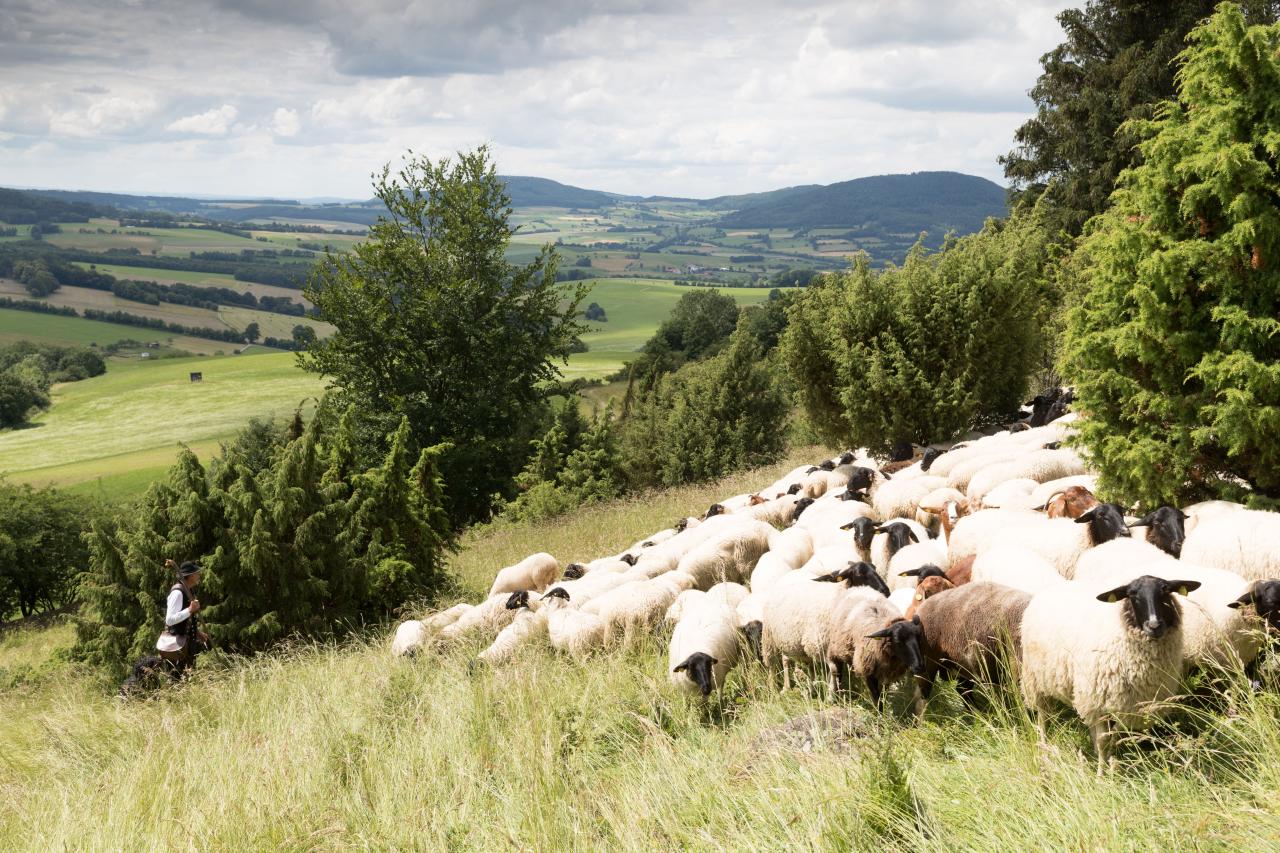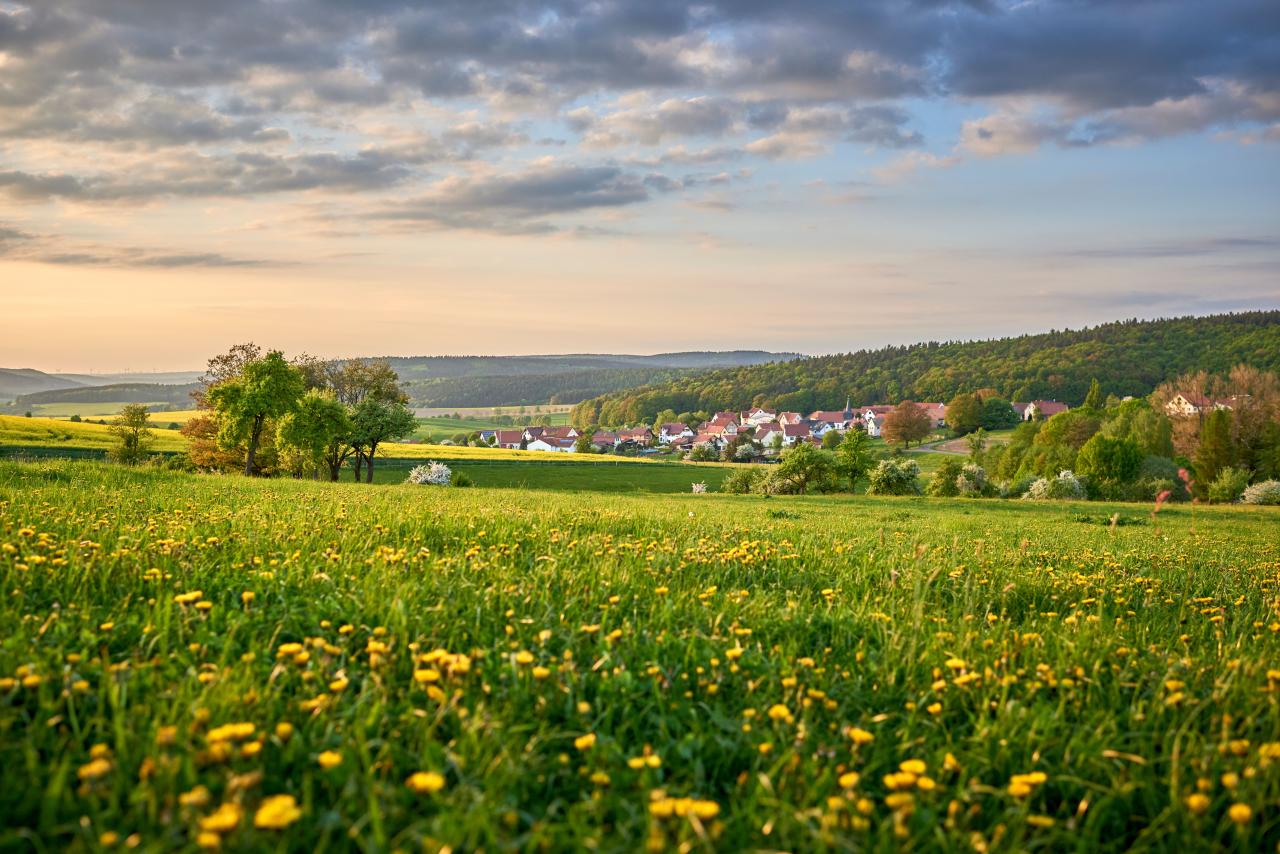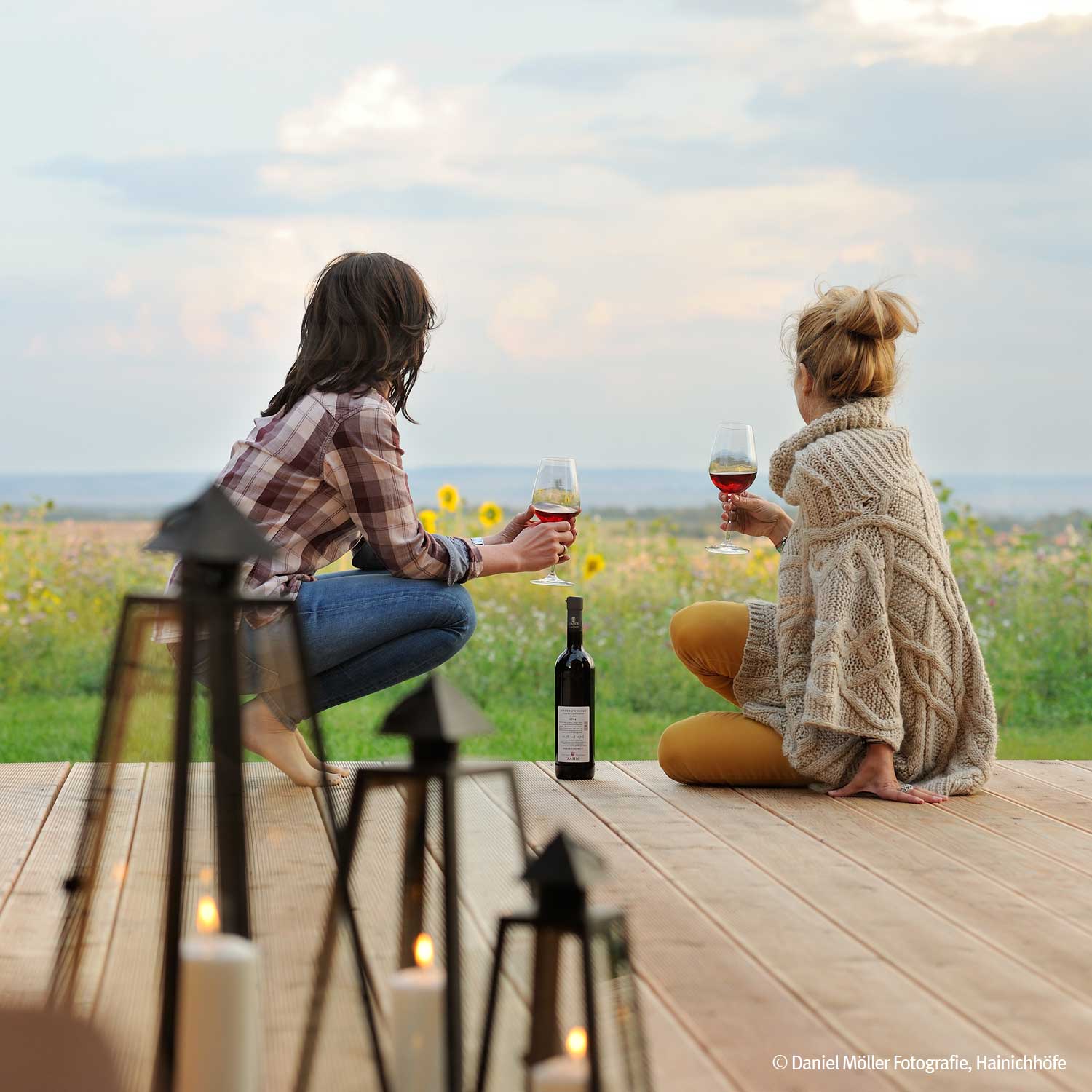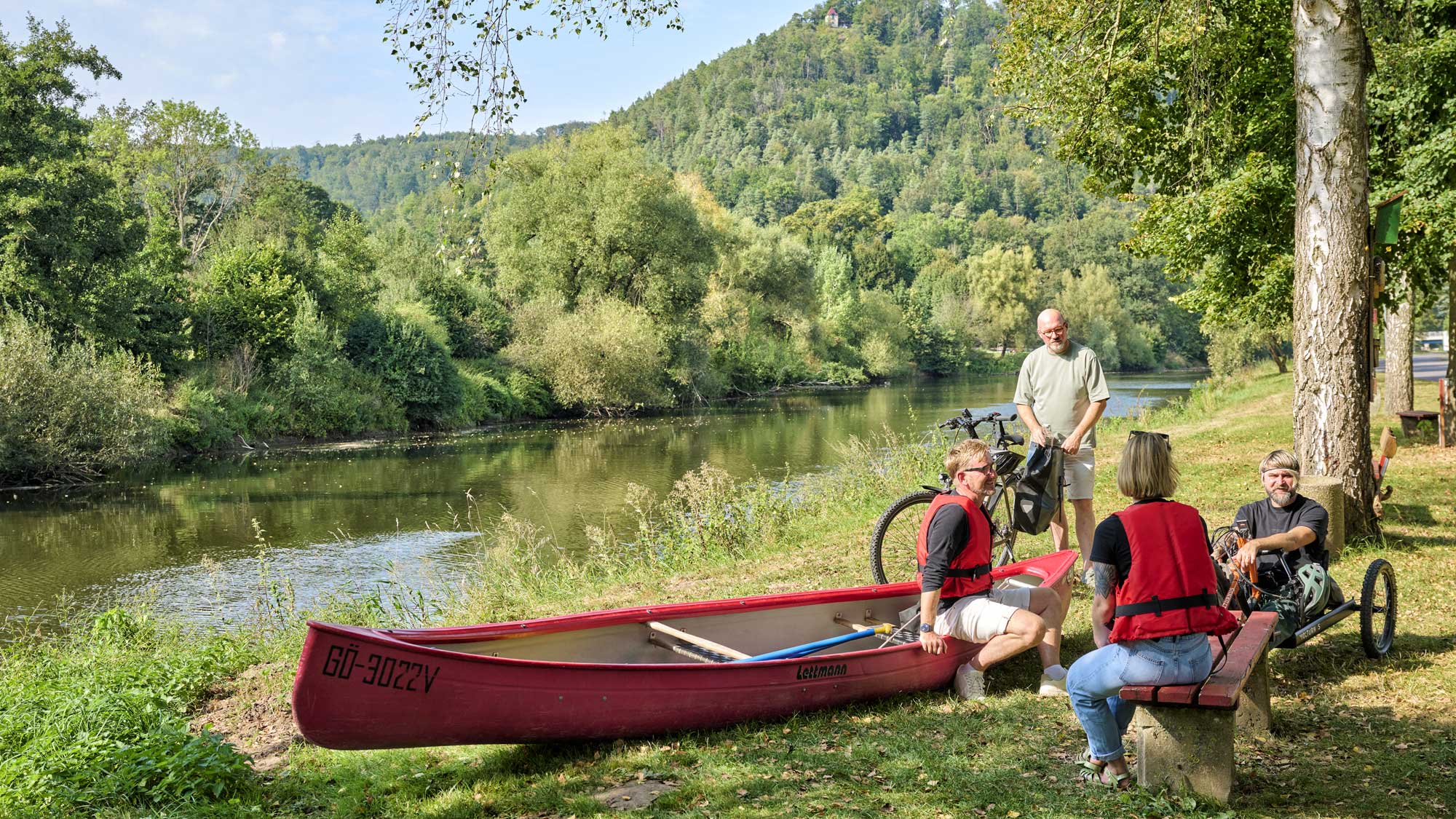You're in the right place! Whether in nature, in the middle of the city, for families, in the countryside, historic or traditional: among Thuringia's TOP hosts, everyone will find exactly the right address.
A picture-perfect landscape
Rhön UNESCO Biosphere Reserve
Leaving your everyday lives behind
When we hike, our everyday lives drop away. We have a view over meadows and gentle mountaintops. The wind caresses the vast landscape, and we can hear the bleating of the Rhön sheep from the distance. A red kite soars through the sky. Easily recognisable with its long, narrow wings and its deeply forked tail. The Rhön is one of its nesting areas.

Shepherd with Rhön sheep ©Georg Knoll, MERIAN
We walk through extensive low-nutrient meadows with blooming splashes of colour in sun yellow, soft violet and brilliant white. We shouldn’t pick the flowers, of course. But we can take photographs! Including for later identification at home. Perhaps it was a lady’s slipper that glowed there at the edge of the path, the rare greater butterfly orchid or the great burnet.
Human activity has shaped the face of the Rhön over centuries. Old pastures, large orchards. Now we understand why people say that it is an old cultivated landscape. And there is the next orchard. In the spring, the air here must be filled with the buzzing of thousands of bees. Rhön honey is a speciality. At the moment, the trees are laden with fruit. Many old varieties of fruit thrive here.

Spring in the Thuringian Rhön ©Joris Lugtigheid, Thüringer Tourismus GmbH
Such a hike makes us hungry. It is time to head for the next village and stock up in a Rhön farm shop. Fortunately, it is just behind the orchard. Oh yes, we sigh. And think: the Rhön makes us happy. As we walk light-heartedly across the soft grass to the village.
Hiking under the stars
We set off at dusk, equipped with warm clothing, a blanket, a Thermos flask and binoculars. We also have a rotating star chart and a torch, which we have prepared with a deep-red film so that the light is not too bright.
This hike into the darkness is unfamiliar. It feels as if we are children who are secretly creeping out of the house at night. Trees and bushes merge into silhouettes. We hear chirping, murmuring and rustling. In the west, the sunset casts a purple light over the landscape. Then we enter the forest. There are noises from the undergrowth. Our senses are on edge. We walk slowly and note that our eyes are gradually becoming accustomed to the dark.
On a treeless hill, we set ourselves up on the blanket that we have brought with us. It is good to lie there and look up. Above us is the early night sky with the first spots of light. And then it begins: star upon star appears, one after the other, in ever increasing numbers. Among them an indistinct, silver band: the Milky Way. Observed through the binoculars, it becomes a glittering sea. Like a heavenly treasure chest. Huge, eternal and beautiful. Ideally, we would lie here the whole night and simply watch.
Titelbild ©Marius Holler, Rhön GmbH
Did you like this story?
Maybe, you'll like this too ...













